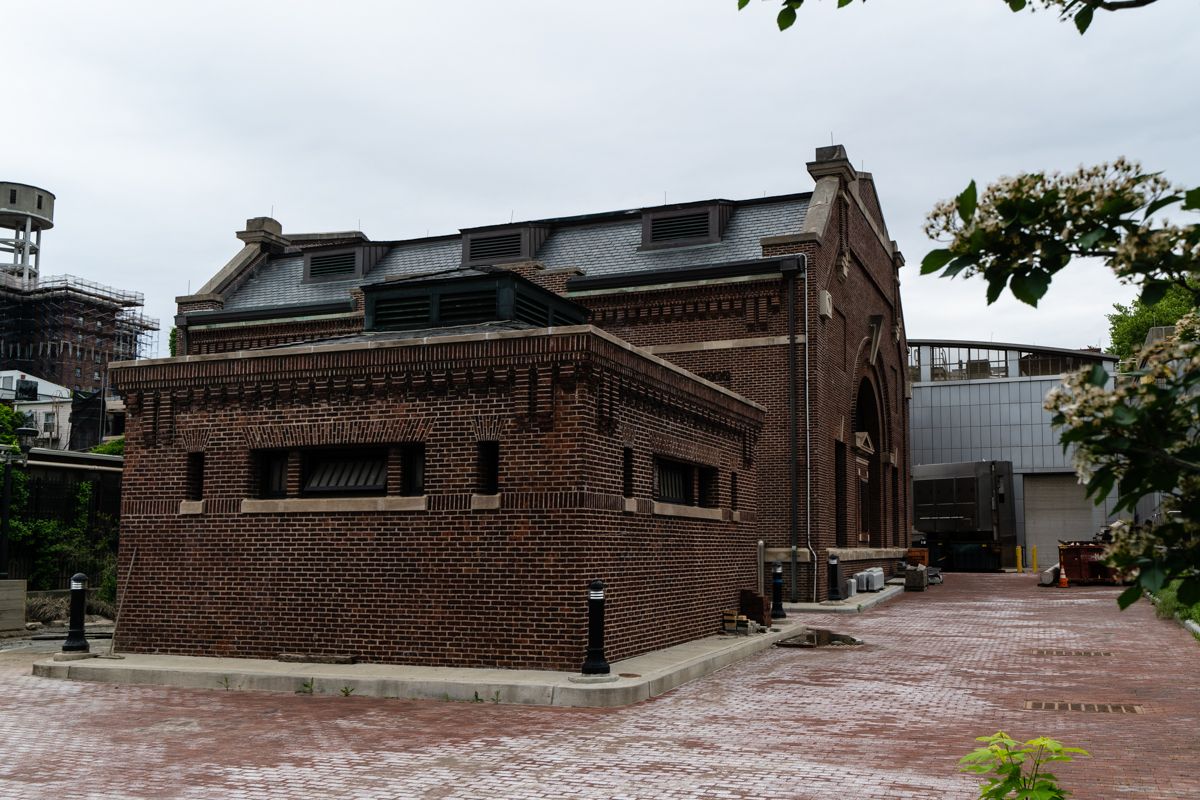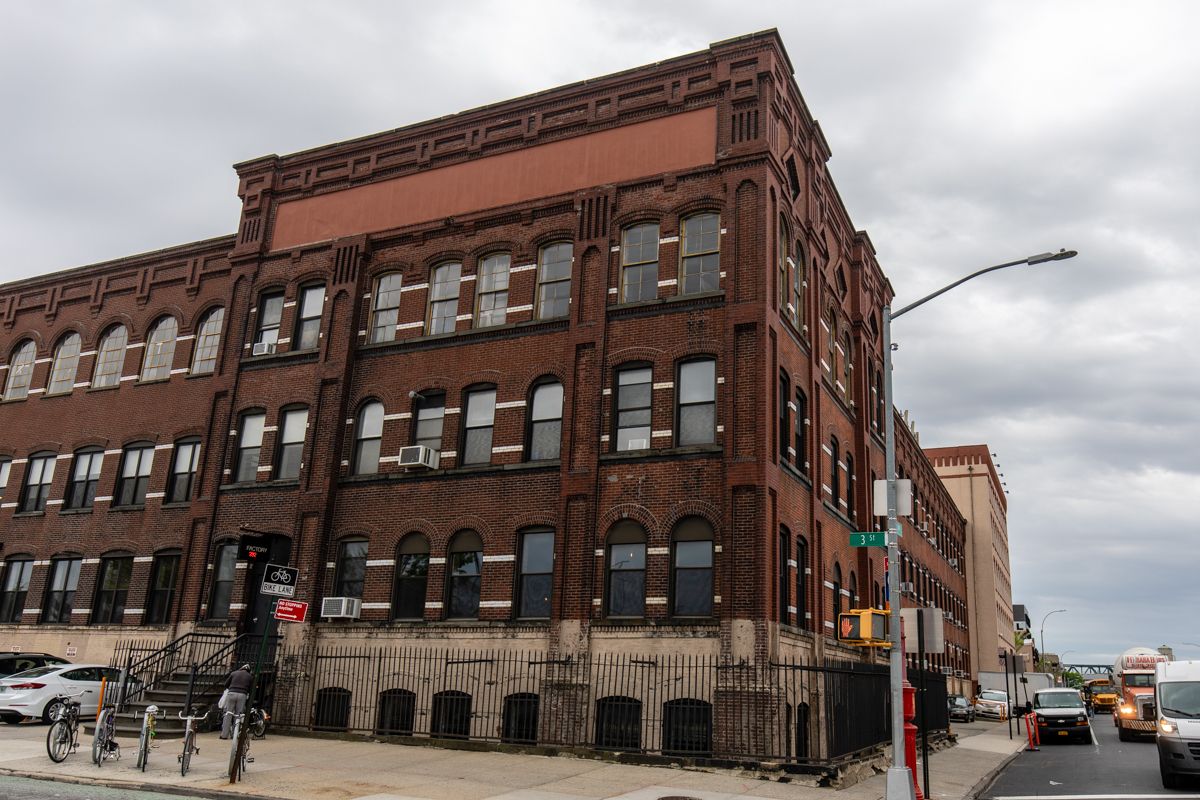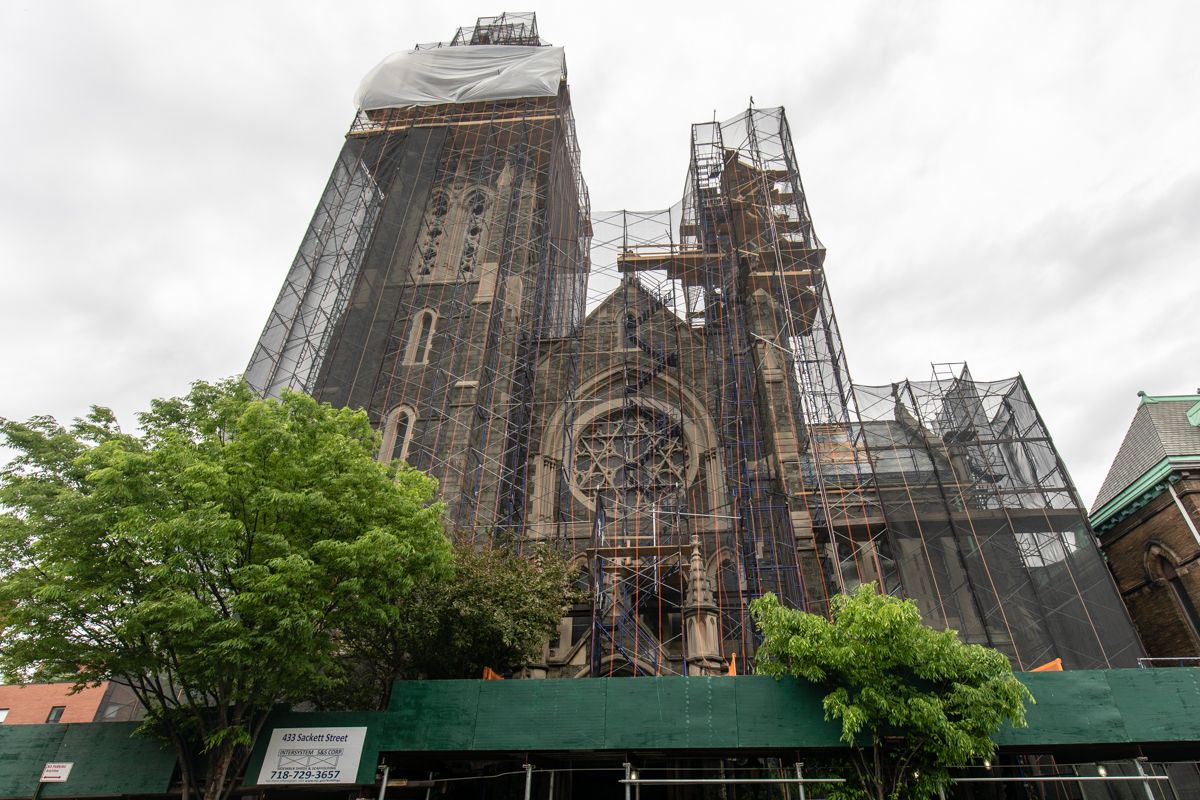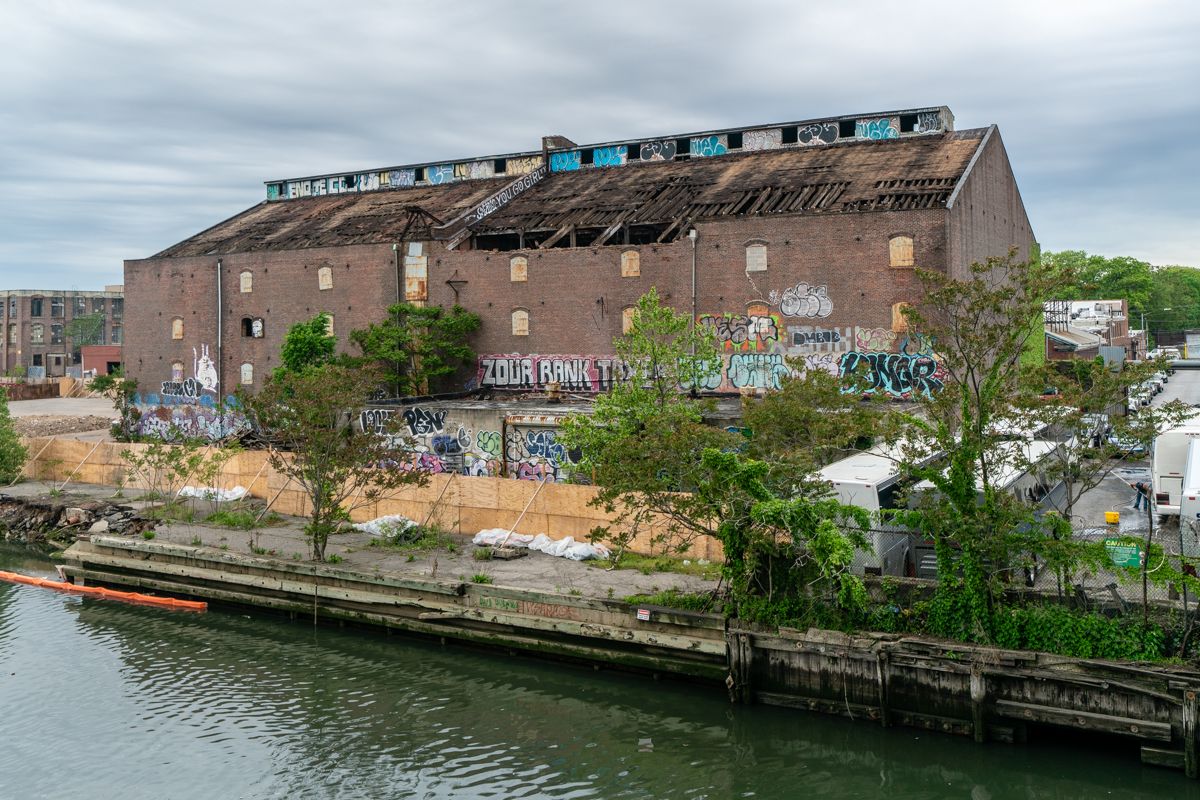Coalition Proposes Gowanus Landmarks Prior To Rezoning

GOWANUS- A group of Gowanus residents and community leaders gathered at the Union Street Bridge Tuesday morning to call on the NYC Landmarks Preservation Commission (LPC) to consider key historical sites in the neighborhood for landmark designation.

“Rezoning plans may be announced for Gowanus any day now,” Linda Mariano of Friends and Residents of Greater Gowanus (FROGG) said in a statement prior to the press event, “and while this coalition proposed a group of landmarks last summer during the Gowanus Places Study, it’s more important than ever to reiterate our call. Without landmark protection, our neighborhood is vulnerable to losing its most defining features.”
“I think it is a very fitting spot to be right in this precise location,” Brad Vogel said while standing by the Union Street Bridge Control Tower at the start of the press conference. “We have a storm coming in. I think it’s a perfect metaphor for rezoning coming to Gowanus—a lot of uncertainty—and what this group is trying to do is make certain that a number of key historic landmarks in Gowanus are officially designated as landmarks even as rezoning comes, even as great change comes to the neighborhood.”

The coalition advocating for landmark designation of 33 sites in the Gowanus neighborhood consists of individuals and groups who came together last year during the the NYC Department of City Planning‘s Gowanus Places Study. The coalition referred to earlier surveys of proposed landmarks and data collected about the neighborhood over the years, as well as the Historic Districts Council’s Six to Celebrate list, to compile their own list of buildings they’d like the LPC to consider for landmarking.
“We don’t anticipate that every single one of these will get landmarked necessarily, but we do think more than a mere two or three buildings need to be landmarked in conjunction with the rezoning,” Vogel said.
“Our main point in doing this today is we have been saying for quite some time that landmarking is needed, and now, as rezoning is imminent—that’s what we keep hearing from City Planning—we think it’s important that landmarking occur in conjunction with, or before, the rezoning so that when developers are off to the races, we still have some shreds of the historic character of Gowanus left,” Vogel told BKLYNER.

“On November 6, 2008, I filed a request for evaluation for the Gowanus Canal Corridor and have since done that periodically every couple of years, and I get back a ‘thank you’ from LPC and a promise that they will do something about landmarking something in Gowanus,” Mariano told the small crowd assembled on the bridge. “That’s ten years of asking LPC, and LPC doing nothing.”
In April, Mariano and Vogel organized a candlelight vigil to save the Gowanus Station building from demolition to make room for an eight million gallon Combined Sewage Overflow (CSO) tank as part of the Gowanus Superfund cleanup. An effort to save the 100-year-old Gowanus Station by having it designated a historic landmark failed when the LPC decided that it lacked “architectural significance and integrity” due to too many alterations to the structure over the years. Following this rejection, the LPC said that it is currently conducting its own study of potential landmark sites in the Gowanus area.
“Ultimately it’s a moral issue here,” Mariano added. “I think that LPC has a responsibility that they have ignored for Gowanus. Maybe some other neighborhoods have gotten more. We’ve gotten nothing.”

Vogel says “the general gist” that the coalition has received from City Planning is that the upper portion of the Gowanus Canal (north of 3rd Street) will likely be rezoned to become more densely residential.
“Our fear is, as happened in East Harlem and East New York, there was rezoning in the neighborhoods and there were a few landmarks designated, but there were only [approximately] three,” Vogel said. “We have a list here of [more than] two dozen. We’re under no illusion that we’ll get every single one of them, but we certainly think that a dozen landmarks is not out of line for this neighborhood that has very few landmarks at present,” he added. Currently in Gowanus, the Carroll Street Bridge and the Coignet Stone House are the only two officially landmarked structures, according to Vogel.

“My concern about what’s about to happen in Gowanus is that it will repeat the pattern of what has happened in the other neighborhoods that this administration has rezoned around the city where landmarking and preservation issues are an afterthought,” said Chris Cirillo, a resident of neighboring Cobble Hill who helped obtain landmark status for a handful of buildings in East Harlem where he works.
“In East Harlem, after the rezoning was approved, the LPC landmarked three buildings—in the entire neighborhood of East Harlem. We have a similar list that has probably at least as many buildings on it that we submitted, that we asked Landmarks to look at, and it wasn’t until the very end of the process that they managed to get around to landmarking three buildings,” Cirillo explained.
“We are now post-rezoning and development is happening and buildings are at risk and they’re coming down around the neighborhood every day,” Cirillo continued. “We need to all work together across the city, in every neighborhood that is facing this challenge, and really raise our voices to make sure that the Department of City Planning cares about preservation and really does comprehensive neighborhood planning, not simply zoning, and that the LPC does its job.”

“What our concern is, is that a firestorm of rezoning is coming,” said Simeon Bankoff, Executive Director of Historic Districts Council. “If the city doesn’t act before the rezoning to preserve some of these older structures, there won’t be anything left.”
“Across the city, there have been rezonings in every neighborhood,” added Kelly Carroll, the Director of Advocacy and Community Outreach for the Historic Districts Council. “It doesn’t take anybody with expertise to figure out the formula. The city is rezoning neighborhoods and then they’re going and landmarking afterwards, and what we’re getting are maybe one or two buildings which have all been city-owned in many cases. We are trying to get ahead of that.”
“I have said many times that historic preservation is an essential part of comprehensive city planning and in this case, the city is not treating it like that,” Carroll continued. “We have been pushing City Planning and the LPC to please designate some individual landmarks here, possibly look at small districts at the head of the canal, and to do it soon because word on the street is that this rezoning is right on the horizon, and we have heard nothing from any city agency about how this is moving forward.”

The coalition’s next steps are to try to get the Council Members who represent Gowanus more involved and to pursue a meeting with the LPC. However Vogel noted, “The LPC Chair is resigning and will be out of office as of June 1. Our hope is to redouble our efforts at outreach on this after June 1 so that even if rezoning drops in the meantime, we are pressuring the new Chair to take action on this.”
“Because [Gowanus] is represented by three Council Members (Brad Lander, Stephen Levin, and Carlos Menchaca), there has been a lot of buck passing,” Bankoff said. “Council Member Lander has really been the lead in the rezoning but strangely he doesn’t represent the specific sites, so he says, ‘You’ll have to talk to my colleagues about it.’”
While representatives from Lander’s office have sat in on the working group discussions, they have not been “collaborating with the community as much as they possibly could,” according to Bankoff.

“The S.W. Bowne Grain Storehouse (595-611 Smith Street, Red Hook) is in Carlos Menchaca’s district,” Vogel added. “His office was actually very responsive [last week] when I notified them about the man with the axe on the roof of the building [removing the shingles] and they at least took steps to reach out to the Department of Buildings. That was encouraging to see a Council Member taking an active role in attempting to find out information about one of the buildings on the list.”
“The Gowanus rezoning is going to happen soon, so one of the things that we’re driving is we’re going to be asking the administration to act on this before, or at least start considering this, before they start rezoning because that will affect their environmental review,” Bankoff said. “There’s going to be an environmental review that says this is the intention of the city to upzone, which is what it’s going to do, and it’s a cleaner planning process if you actually identify the historic resources first.”
The coalition includes: Friend and Residents of Greater Gowanus (FROGG), Historic Districts Council, The Old Stone House, Park Slope Civic Council, CG CORD (Carroll Gardens Coalition for Respectful Development), and more.



